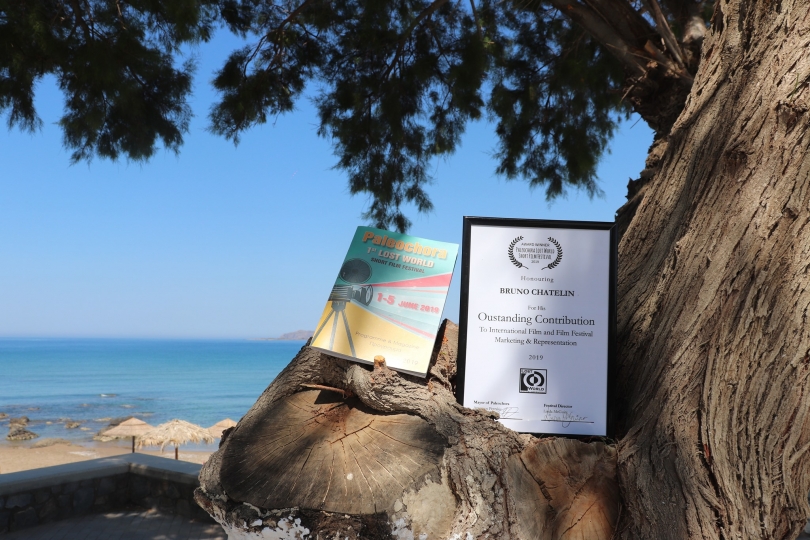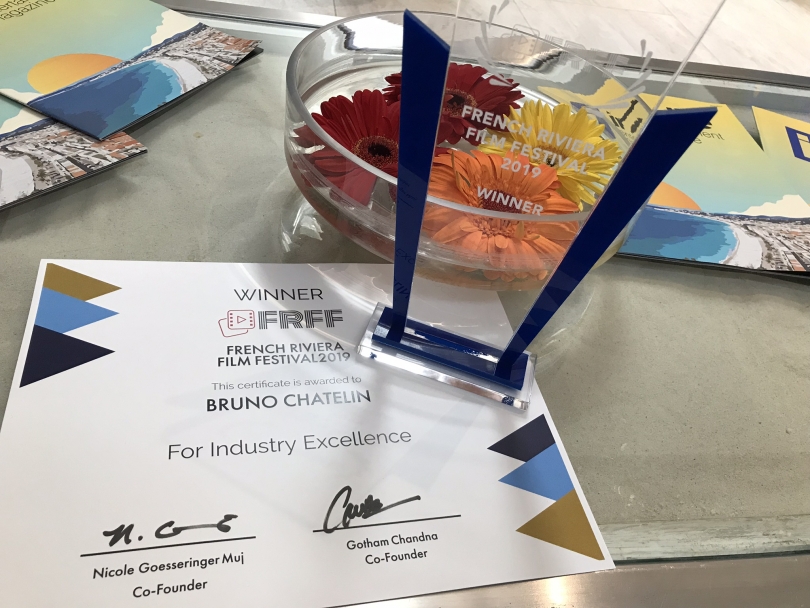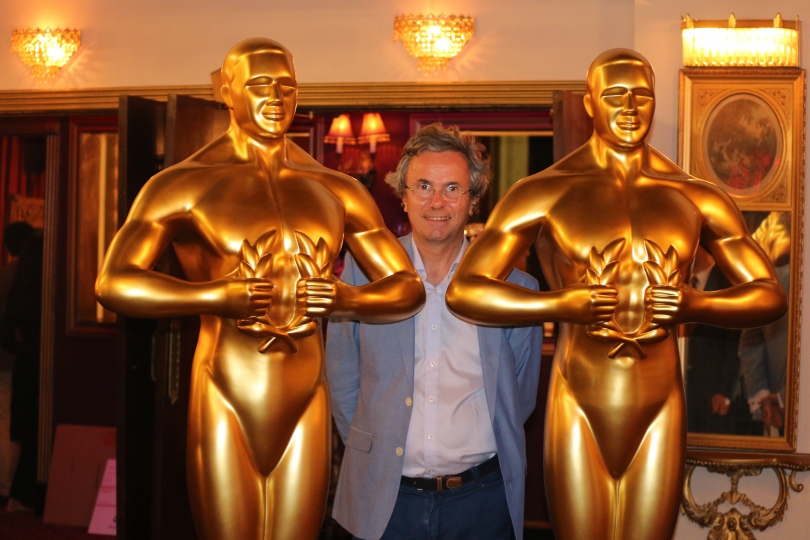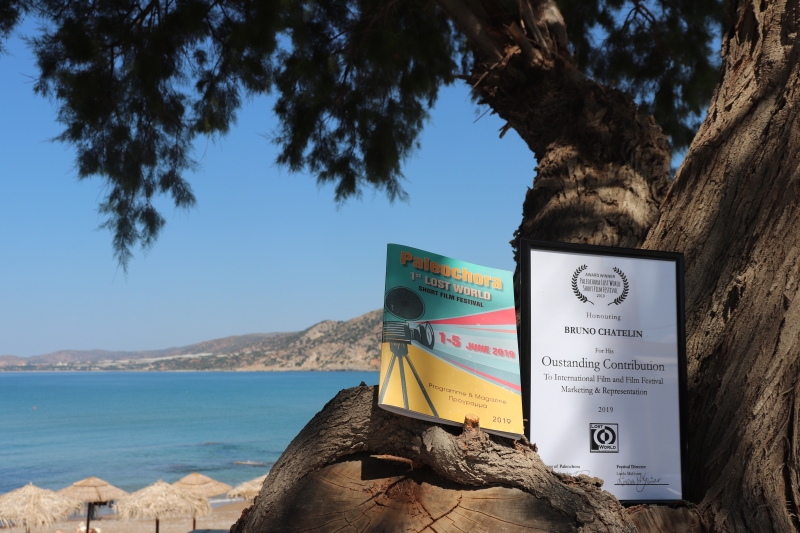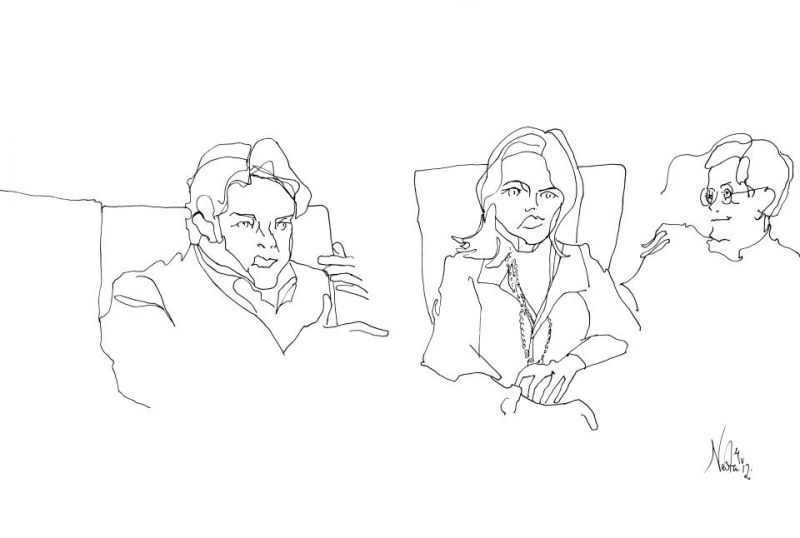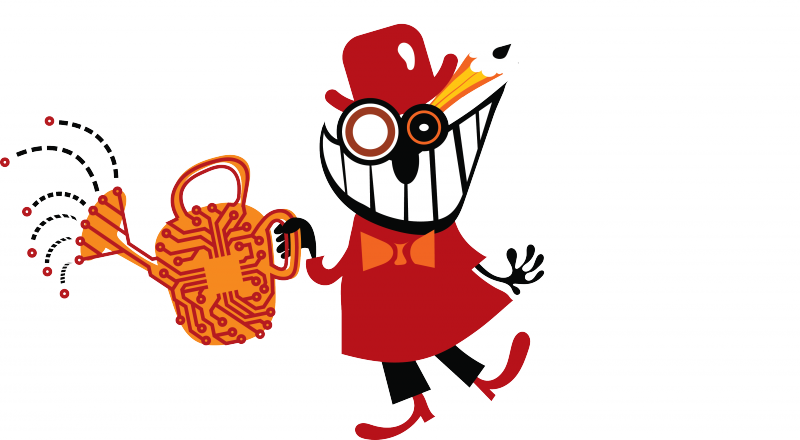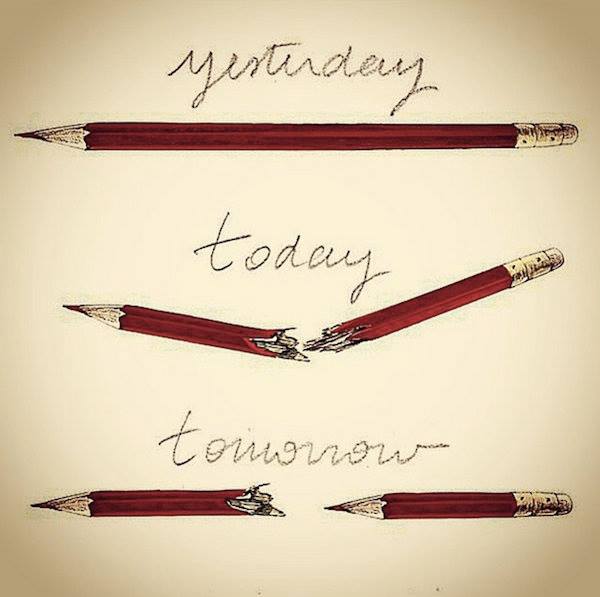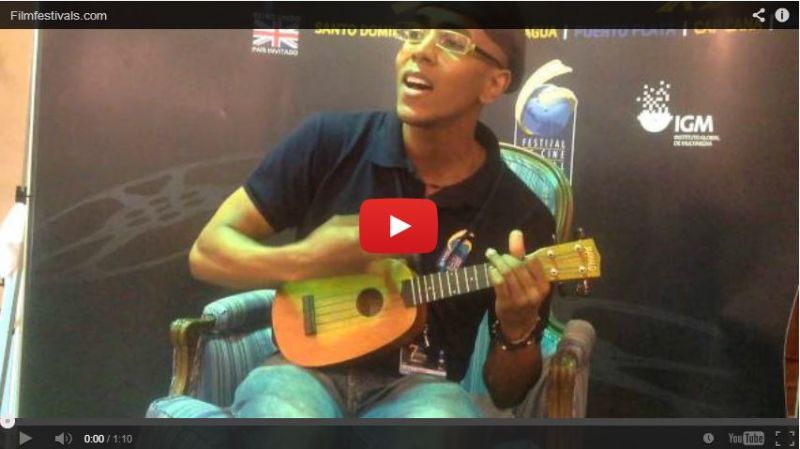|
|
||
|
Pro Tools
FILMFESTIVALS | 24/7 world wide coverageWelcome ! Enjoy the best of both worlds: Film & Festival News, exploring the best of the film festivals community. Launched in 1995, relentlessly connecting films to festivals, documenting and promoting festivals worldwide. Working on an upgrade soon. For collaboration, editorial contributions, or publicity, please send us an email here. User login |
Editor
THE NEWSLETTER REACHES 171 000 FILM PROFESSIONALS EACH WEEK (december 2023) .Share your news with us at press@filmfestivals.com to be featured. SUBSCRIBE to the e-newsletter.
MEET YOUR EDITOR Bruno Chatelin - Check some of his interviews. Board Member of many filmfestivals and regular partner of a few key film events such as Cannes Market, AFM, Venice Production Bridge, Tallinn Industry and Festival...Check our recent partners. The news in French I English This content and related intellectual property cannot be reproduced without prior consent.  James Cameron and Zoe Saldana give the rundown on AVATARAVATAR'S writer/director/producer James Cameron and Zoe Saldana, who plays Neytiri in the movie, spent some time after a 3-D screening in Hollywood to discuss the project. This screening was hosted by The Wrap and sponsored by Google. This ultimate AVATAR interview gives you a glimpse into the making of what has become the biggest money maker in film history. 0000 Now you'll even know what the mythic substance "unobtainium" really is from director James Cameron's own personal tales behind the scenes.
On the massive audience reaction...
JAMES CAMERON: It's a little bit surreal -- it does feel a lot like the TITANIC experience with the success of this film. At that time I said 'enjoy it, this is never going to happen again.' At that time there was no reasonable expectation that this would ever happen twice in a lifetime. So this is all gravy, all upside. I am really enjoying the ride. I also know from experience to enjoy it right now. On this film, I sort of said 'I am not going to fetter my imagination in any way.' I had waited my whole life to do this film -- the biosphere, the creatures all of that, the whole thing, whatever I pictured in my head -- I would try to do it. Once you have gone down that path of creating a world in CG, all things become equal in a strange way. It's as hard to do somebody picking up a glass of water as it is to do a floating mountain. Once you've said that you are going to create that reality on screen fully in CG, it's a strange sort of equalizer. Really it all boils down to design, so the critical first step is to hire a great set of designers. You start with the creatures, and we expanded to the human face. I think of myself as the writer as throwing down a series of challenges to the designers to create something that fits that dramatic or narrative purpose for the creature. I don't know what the characters are going to look like; I don't know what the colors are going to be, so for me it is a way of discovery as I work with the designers... We'd throw it up on the wall. When one artist scores a home run, the other artists are challenged by that. They had to step up. This is really fun and part of the process, the design of an alien world. He feared the technology wasn't ready yet...
JAMES CAMERON: The technology side of the question is -- 'now we have to fulfill that promise.' In our case we knew it was possible. Where we felt the challenge lay was in the close up. This size (make a box with his hands) right here, this where the movie lives and breathes. You are watching (an actor) in person. If you think of the CG as make-up, you can change the spacing between the eyes and the color of the eyes. You can embellish the character, that's what we're talking about.
ZOE SALDANA: (Jim) you can answer about the technology. You know me, with the tech questions -- 'it's like the thingy and the thingy.'"
CG came of age just in time for this movie to put life behind the characters eyes...
JAMES CAMERON: It's the eyes, and it was also the entire face. We have almost as many muscles in just our face as we have in the entire rest of our body. So the systems previously that we used were good at capturing body performance, we basically did the same thing. But we completely changed the way the face was captured. The way Zoe's mind reacts with her facial muscles is going to be very different than the way Sam's does and the other actors do. So it wasn't just a question of the perfect CG model for these characters, it was a nine month process of rigging -- it's interesting it was 9 months -- the characters were born at the end of that nine month period. We saw Neytiri come to life. We all just sort of sat there grinning that Neytiri was now alive. It took exactly nine months of the rigging process - essentially training the CG modeling to be you (Zoe) to act the way you act. So that nothing was left behind in terms of what you want in terms of performance. You have a perfectly good record of Zoe Saldana down to the tiniest iota of her performance. When that breakthrough moment happens it really feels like the character is coming to life.
ZOE SALDANA: It is important to point out that you helped us (actors) so much. When we jumped in the battle, you did not want us to worry about the technology. By the time you were able to start shooting, everything was always prepared. We'd get there to the set, be there with Jim. You knew the entire crew was going to handle their jobs. When we got there in our unitards, all we had to do was rehearse, work. That helped us so much.
JAMES CAMERON: I had been training myself on the performance capture work, actually working and building our studio from scratch for about 10 months. By the time it got to Zoe and Sam to shoot the first scenes, we wanted to look professional!
AVATAR was actually conceived before he shot TITANIC...
JAMES CAMERON: The outline for AVATAR, was actually written before I shot TITANIC. AVATAR and the 3-D aspect are actually separate subjects for me. At that time, it did not seem like it was practical to do 3-D. It seemed like 3-D was so specialized, like there were only 50 IMAX theatres. As it evolved, as it paralleled the camera system, in 2006 digital production had a renaissance of 3-D technology. So while I was out prosthelytizing for that, we were also developing a second and third generation of the camera system that we shot AVATAR with. So if you cut to spring of 2005, we were actually prepping for another film - I got out AVATAR, read it and said ‘maybe we should be doing AVATAR.' In May 2005 we started to do creature design, Neytiri and the Na'vi. I hadn't written the whole script yet. Three months later I started writing the script in 2006. The period of 2006 was pretty much design. Zoe was the first one cast.
ZOE SALDANA: Earlier that year, I had met with a casting director in New York who wanted me on tape for the next James Cameron movie - all of a sudden it went from a robot to a jungle warrior. I was like "wait a minute..." And they were having me make sound - the casting process was unusually fun. At the same time it was pretty standard. I was living in New York at the time. They had me put myself on tape dancing, because the physical part is very important. Jim had a way of making me feel comfortable. Even though I knew the part wasn't in the can yet, I was completely curious about the part. I wanted to explore. Jim would grab a camera, shoot and go downstairs in his office in Santa Monica. We would wait for hours to see what he would come up with. I would do my scenes and we would just talk and talk and talk about the characters. I remember thinking that even if I didn't book the job, (the pre-production) was the most extraordinary experience of working with a director. I learned so much. Meeting Sam was extraordinary too. In the beginning I didn't understand a word he said. He has a very thick Australian accent. I It became like the Musketeers, just Sam and I. Everything Jim would do, we would want to do too. We would spend hours talking about some aspects of the film. Jim, the freedom that you gave me, not just me and the cast, but all of us - also the crew - was incredible. He would say, "trust me, there's no such thing as a wrong answer or a wrong attempt."
JAMES CAMERON: We hired an ex-Cirque du Soleil performer, and Zoe and some of the other stunt performers in the core troop - the Na'vi crowd and so on - that core troop came up with a kind of visual vocabulary. At first it was very stylized, overly stylized, then it all came back to the slightest nuances.
ZOE SALDANA: Everything comes into consideration, from their physical anatomy to the slightest detail, obviously with Jim guiding us. But then there's the spiritual side of the characters. The Na'vi don't have a word for "lie." They don't live a lie; they don't know what a lie is. Everything they do is so genuine and pure, even from the way they turn to address each other, has a trust in it. We would always talk about that. When you are a confrontational person, you have to imagine what that kind of trust is.
JAMES CAMERON: It's deprogramming your human aspects so you become a Na'vi.
ZOE SALDANA: Oh my God, how many takes did we do where I had to say "Jim, can we just look back at that tape?" And yes, there it was, I nodded my head. "Darn it!" So it was dehumanizing myself. I would just get up in the morning and climb my way to work as opposed to walking. BY the time I got (to the set) everything was supposed to be second nature.
JAMES CAMERON: It took us several tries to figure out how to fly. The first thing was, well, maybe it is similar to a motorcycle leaning in to take a turn. So we build it - a rigging and a harness -- we called it the "Banshee Buns of Steel" workout.
ZOE SALDANA: Sam and I (were crouching the whole time), but we had stunt doubles as well. If the call time was 8 am, we'd workout the stunt coordinator, and ‘ow' he would beat us up - he knew he had to work us (hard) so that by the time we got to the set we would have the strength to endure riding upright on the Banshee.
JAMES CAMERON: The quads and the buns got quite a workout because they are in this crouch. I wanted (the flying) to have this athletic look, like almost a board sport. I didn't want them just to be plunked in the saddle. So we came up with this vocabulary that as you banked, you'd push your center of gravity to the center. So you look like you are upright all the time. We came up with these riding pegs, and we integrated them into the creature's body -- also, these clavicles that you could hold on to.
ZOE SALDANA: Once we mastered that, we also had to be warriors. So everywhere Netyiri went she had her bow. And there I am, using my quads, and holding a bow with one hand!
They actually had partial physical models of the imaginary creatures to work with...
ZOE SALDANA: It was the torso of a Banshee made out of fiberglass. We would get on those.
JAMES CAMERON: It was built by the stunt guys, on a two-axis gimbal.
ZOE SALDANA: We were wired on harnesses, for security purposes. We were 5, 6, 7 feet off the ground. Once you understood the kind of agility these creatures were supposed to have, you wanted to honor that. By the time you guys sit down and watch the movie, it is believable.
JAMES CAMERON: We wanted it to be believable, but to be something you'd want to aspire to - something you'd want to do. I think that it was intentional goal to tap into the childhood dream state. When you're a kid, you think that you might be able to fly some day. When we get older, we stop dreaming about flying. I think one of the goals of AVATAR is to put us back into that childhood state. And you get to do it on a level that's acceptable to the adult mind by putting in a lot of cultural and textural detail into the images. But after a while, you stop being so critical and skeptical and go along with the flow - then you're really having fun. It's kind of a waking dream state; that was the goal we set up in terms of the 3-D aspect as well.
He wanted this to be the movie that will define his entire filmmaking career...
JAMES CAMERON: I've made other big budget Hollywood action movies that were not transformative, so there was an evolution to it and a consciousness about AVATAR - that we were going to do something beyond the ordinary. My goal was to capture for a cinema-going audience the kind of wonder that I had as a kid when I saw a Ray Harryhausen movie. [Ray Harryhausen did early special effects in the SINBAD series, JASON & THE ARGONAUTS and CLASH OF THE TITANS.] I didn't know how it was done, I couldn't begin to guess how it was done. But I didn't care - whether it was MYSTERIOUS ISLAND or JASON & THE ARGONAUTS with the skeletons coming out with swords and fighting. I didn't know what stop-motion animation was, it didn't matter. Then when I saw 2001: A SPACE ODYSSEY. I could not begin to comprehend how that movie was made. But it mattered enough to me to make me want to find out. That's' what actually set me down the path of being a filmmaker, trying to crack the code of that movie. It had that same sense of wonder for me, whether it was CLOSE ENCOUNTERS or STAR WARS. Those were films in terms of visual filmmaking. But it's one thing to set out to make a film like that, it's another to actually pull it off. I had to martial an army of great imaginations to work toward this film. I think people have to let go of this "Auteur" theory - that I created everything in this movie - and embrace the idea that this is from an amazing talented group of people. These people did their best as animators and designers to help create this huge hallucination.
ZOE SALDANA: That's what I loved the most about going to work - somebody had an epiphany while they were sleeping, and would come in the next day with a new idea. The best example is the swimming scene, that was the topic of conversation at lunch time for months, "so, how are we going to swim without being in the water?"
JAMES CAMERON: Not to spoil the magic, but they would up simulating swimming on my office chairs. They rolled across the floor in a swimming position - it was fair!
ZOE SALDANA: To us, every wire was a tree, a branch or an animal. Every human being was either a Banshee today, a minotaur tomorrow and a Na'vi later on... that is why I have to say this was honestly one of the most amazing (collaborative) experiences, and God knows how far we can go. If very film set had that essence: there is no wrong thought or wrong approach --
JAMES CAMERON: Except for Alonso's war cry. I encouraged people to come up with a cry or call for their Banshee. Some people came up with these great hawk cries --
ZOE SALDANA: Sam had a good one.
JAMES CAMERON: Alonso sounded like a turkey.
ZOE SALDANA: Jim was like with his headphones saying "War cry, come on Alonzo!" Then Alonzo blew out his earphones. He was like "No, no, Alonzo. Not like that."
JAMES CAMERON: He eventually came up with one. Laz Alonzo plays Tsu'tey, the failed Na'vi warrior. What people don't realize is that computers are involved in this artform, but they are just a tool. It takes artists like Zoe to create the performances. It takes, in some cases, a troop of animators down at WETA digital (in New Zealand) to make sure the performance is preserved. The software is just a tool; it takes the artist or a group of artists to make this work. The artists have a two-fold task - to animate these amazing creates like the Banshees. The other task was to work with the captured performances from these artists and preserve the (life-like movements), which is a very different task. Normally animators love to be very gestural and very big. As a director, I wasn't interested in performance by committee. I wanted the performance to be locked in by the actor on the day of the shooting of that particular scene. My deal with the cast was, "we do it now, we work hard, we get it right."
ZOE SALDANA: You're a storyteller, and that was the most important thing. All the technology is rich and beautiful, but it's there to compliment the story. Without these characters, without Jake Sully's journey this would just be "Animal Planet" or a "National Geographic." Sitting there, what is it that compels you, moves you and keeps you watching? It's the story.
JAMES CAMERON: And certainly this is a little different than "Animal Planet" because you've never seen these species before. But this film flies in the face of science, we are going to travel 4.4 light years away and meet people who cry like we do - have pain in their voice and emotional aspects like we do. The Na'vi are really like some higher part of ourselves, the better aspects of human nature. It just occurred to me while we were talking that your task as an actor, whether you knew it or not, was this leadership role thrust upon you as Netyiri. Zoe had to crack the code of the accent - she acts her entire part through an accent, which is not in any way familiar to human language. It had to be created. Zoe's entire part was either in an entirely different language or in different sounds or with an accent. She had to pull that off for the other actors.
ZOE SALDANA: It was kind of like we all had to match our sounds. As the first person cast, I moved quickly from NY to LA - I was here (in LA) for the sole purpose of AVATAR. For things like the helmet or the headgear, we were using the same things that had been used in BEOWULF (3-D film from director Robert Zemeckis in 2007).
JAMES CAMERON: Actually we were the first ones to do a helmet. But we had been working on it for like a year. It evolved. If I'm not mistaken, the first one was very painful.
ZOE SALDANA: Standing, it was okay. But the moment you incorporated physicality - there were like bottles of Advil for Sam and I on the set. Next we went to Stan Winston's company - they made a model of our entire head. Within two weeks, we all had our own helmets. We had our own head-rig that was molded to our head, and it was nice and cushiony! Sam drilled holes in his so he could breathe -
JAMES CAMERON: Sam was giving off a lot of energy out of his head! Actually it was for cooling.
ZOE SALDANA: By the end of the shoot, it was easier for me to shoot an arrow using three fingers and my hand facing on the inside of my body, and ride a horse using no saddle and not holding the horse at all, than to speak English in a Na-vi accent. That was the biggest challenge. It was Na'vi. Given these sounds, how would we speak English with this accent? We spent hours doing it. From CCH Pounder to Wes Studi to Laz Alonso, we all came with our different accents and origins. So it was about finding a common ground where we all sounded the same. So you guys wouldn't be going, ‘okay, I get that they are all Na'vi, but is this like a Calfornia Na'vi, a New York Na'vi?'
Cameron and his crew even invented some of the hardware for shooting the film...
JAMES CAMERON: The live-action camera was a stereoscopic camera, so you'd have two of everything. A third of the movie was live action, the other two thirds was virtual production, which is a whole other kettle of fish. For the live action photography which we did down in New Zealand for a four month period, it was all the normal things - steadicam, technocrane - but for the stereoscopic cam, we had to build it lightweight and shoulder-operated so we could do a lot of hand-held. It was a technical marvel that WETA's tiny engineering group did it. There are two separate threads here: one is the virtual world, remember Zoe never appears photographically in the film, so I was doing the four months of live action with lights and sets and real human beings - the only difference was the stereoscopic camera. The other was the virtual production, with Sam and Zoe, remember Sam is in both. We only see Zoe as a Na'vi, not as a human being. Sam had to worry about both areas. Plus Sam was the only one who speaks Na'vi in an Australian accent. Through the monitor of a virtual camera, I could see their characters in real time. So if you can imagine, Zoe is playing a scene to Sam - what I am seeing is Zoe's avatar and Sam avatar in real time. I could literally pan around and see the whole world all around them. It was pretty amazing, it was like a window into another dimension that co-exists with the art image, which is the best way to imagine it. So the sensors on Zoe's unitard and the sensors on her (helmet) are being captured by a little camera and all feeding into a bank of computers that are taking that (data) and in the space of about 250 milliseconds figuring out where every point is in space - assigning values to her CG character - and then putting her CG character into the environment and then feeding that rendered image back down once every 20th of a second to my camera. And showing me that image in real time; it's astonishing. It's astonishing, except that we do this stuff all the time in video games. Anytime you play a virtual reality game - it's all passé now - but the same way a video game renders in real-time, this is just a much, much more sophisticated version of that. It put the actors into the loop of that render. It was tons of fun the first few days to watch your character do some funny thing, of course you couldn't see what you were doing. Zoe would lie on top of a table and make swimming motions, and it would look like she was swimming in the air because there was nothing there in the early days.
ZOE SALDANA: I am fully convinced if we had not have had all those screens showing us our characters and Pandora, all those references about how this tree or that was supposed to look, it would have been much harder. Also, watching the playback, Jim had a lot of HD cameras. They were documenting us. Part of that made it feel like traditional filmmaking because obviously Jim would review it first, but we also got to review it. So if you thought you saw a nod or a headshake, you could go back. We could see into the Na'vi and instantly correct it. The only technicality we had to think about was because they were so tall and so slender, that when it came to distances, we always had to keep in mind that Na'vi were closer. Not like with human distances.
JAMES CAMERON: Your interpersonal space had to compress slightly in order for it to look right. So everybody ended up playing the scenes close, it made it all chummier.
On why AVATAR is seems like it has a message...
JAMES CAMERON: I don't know if it was a "political agenda" as much as an artist with a heartfelt sense that I needed to say something in response to the world that I saw around me. I think that's what artists do. I think the politicization of it, where people feel they have to draw lines and take party positions - the stewardship of the planet is something humans are going to have to work together on regardless of your party affiliation. It's not necessarily the knee-jerk action of the right wing to automatically oppose those "tree hugging left-leaning liberals" who are trying to save the planet at the expense of the economy and all that. We shouldn't immediately jump into these camps, we should open our eyes and look beyond that to try to define our role - what our species is doing here on the planet. I think everyone should be a tree hugger. Look, we're living through a war. We have American boots on the ground, people in harm's way, that I personally think were sent there under false pretenses. I think part of opening our eyes as a Democracy is to question our leaders, questioning our leadership - that "freedom" that we're always talking about fighting for? That's to have dissenting ideas.
ZOE SALDANA: The one thing to me is the projection of what has been going on since our existence; you know before there was oil, there was gold, before there was gold, there was spice -- before that God knows what was the reason to go somewhere and have the lack of consideration for (indigenous people). That's what I loved most about the movie, it is a telling of what has been going on. Not only have we done this to earth, but we will move on to other environments and other places - we'll do the same things over there unless we learn. AVATAR is a very good mirror of what our history has been up to now - it's not a preachy point, it's about curbing our tendencies. Like "maybe you just might want to keep your oil - I'll find mine over here -"
JAMES CAMERON: Or find an alternative.
ZOE SALDANA: Exactly.
Finally the core substance "unobtainium" in AVATAR explained...
JAMES CAMERON: Actually we've been ridiculed for Unobtainium in certain quarters, but if you're in engineering at all - whenever engineers can't solve a problem on a designing a device or a system, they'll say "well, this piece here needs to be made out of Unobtainium." It's the thing you can't have in material science. It's an engineering joke. Like "Uranium, Germanium and Unobtainium."
ZOE SALDANA: See I am still learning. I didn't know that.
JAMES CAMERON: Creating believable fantasy is not about the broad brush strokes, it is about the little details -- that you are drawn into somebody's reality.
On the future of 3-D movies without the need for 3-D glasses...
JAMES CAMERON: That's coming. Auto-stereoscopic cameras - I think they could have laptops that are auto-stereoscopic in two to four years for home use - but in theatres I think you may have to wear the glasses for a while.
Cameron debunks media reports that some people wish AVATAR was real and are depressed because they can't visit that world...
JAMES CAMERON: I don't think it's actually a clinically defined syndrome, I think it is just something people are talking about - that feeling of let-down. Luckily, they are a $15 ticket away from a cure.
By Quendrith Johnson, Los Angeles Correspondent 12.04.2010 | Editor's blog Cat. : 3-D 3-D technology 9 actor Artist Auteur avatar Avatar AVATAR bank Company Technology coordinator Director director /producer energy Entertainment Entertainment Epic films fiberglass Films Films with live action and animation Google head , and it was nice and cushiony I. Everything Jim Jake Sully James Cameron James Cameron James Cameron's Avatar: The Game Laz Alonso Los Angeles Na'vi language National Geographic New York New Zealand oil Person Career Ray Harryhausen Robert Zemeckis Sam Everything Jim Sam Jim Stan Winston Technology Technology The Last Airbender virtual reality Wes Studi writer writer /director Zoe Saldana Zoe Saldana PEOPLE
|
LinksThe Bulletin Board > The Bulletin Board Blog Following News Interview with EFM (Berlin) Director
Interview with IFTA Chairman (AFM)
Interview with Cannes Marche du Film Director
Filmfestivals.com dailies live coverage from > Live from India
Useful links for the indies: > Big files transfer
+ SUBSCRIBE to the weekly Newsletter DealsUser imagesAbout Editor Chatelin Bruno Chatelin Bruno (Filmfestivals.com) The Editor's blog Be sure to update your festival listing and feed your profile to enjoy the promotion to our network and audience of 350.000. View my profile Send me a message The EditorUser pollsUser contributions |

















